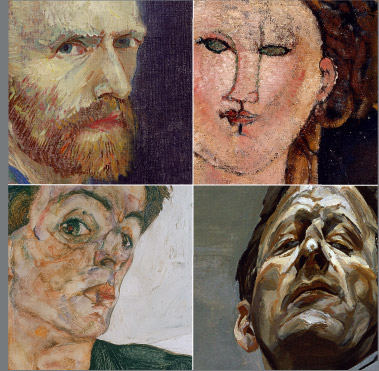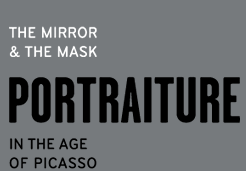


The Mirror and the Mask: Portraiture in the Age of Picasso looks at the survival and transformation of the portrait in avant-garde art between 1890 and 1990, a period that saw a radical shift in the conception of art itself. During these years, modern man’s crisis of identity and art’s crisis regarding the truth of its images particularly influenced the development of this genre. In addition, as photography became the principal vehicle for capturing a lifelike representation of the sitter and artists called into question their traditional relationship with the patron, it might be thought that portraiture was doomed to extinction. In fact, it has been and continues to be a dynamic force within modern art. Not only is it clear that all the key artists of the 20th century experimented with this genre, but in addition many of them made it the key theme within their work.
For the first time, the period in question saw the portrait move away from its traditional function and types to bring about a break between the model and its faithful imitation. The result was to offer alternatives or equivalents through the transformation of the individual into a motif unique to the artist. When approaching the portrait, the modern artist could remain close to or confront traditional models, penetrate or falsify identities and create stereotypes. In addition, the modern portrait could reveal the sitters’ fragility and vulnerability.
Museo Thyssen-Bornemisza
1
Before the Mirror
2
Gesture and Expression
3
Modern Color
4
Masks of the Primitive
5
The Mirror Broken
6
A Portrait of Society
7
Dream and Nightmare
Fundación Caja Madrid
8
Metaphorical identities
9
The Human Clay
10
Gestures
11
Snapshots
12
Shadows

This website fulfills the AA accessibility norm.
For the first time, the period in question saw the portrait move away from its traditional function and types to bring about a break between the model and its faithful imitation. The result was to offer alternatives or equivalents through the transformation of the individual into a motif unique to the artist. When approaching the portrait, the modern artist could remain close to or confront traditional models, penetrate or falsify identities and create stereotypes. In addition, the modern portrait could reveal the sitters’ fragility and vulnerability.
Museo Thyssen-Bornemisza
1
Before the Mirror
2
Gesture and Expression
3
Modern Color
4
Masks of the Primitive
5
The Mirror Broken
6
A Portrait of Society
7
Dream and Nightmare
Fundación Caja Madrid
8
Metaphorical identities
9
The Human Clay
10
Gestures
11
Snapshots
12
Shadows

This website fulfills the AA accessibility norm.



